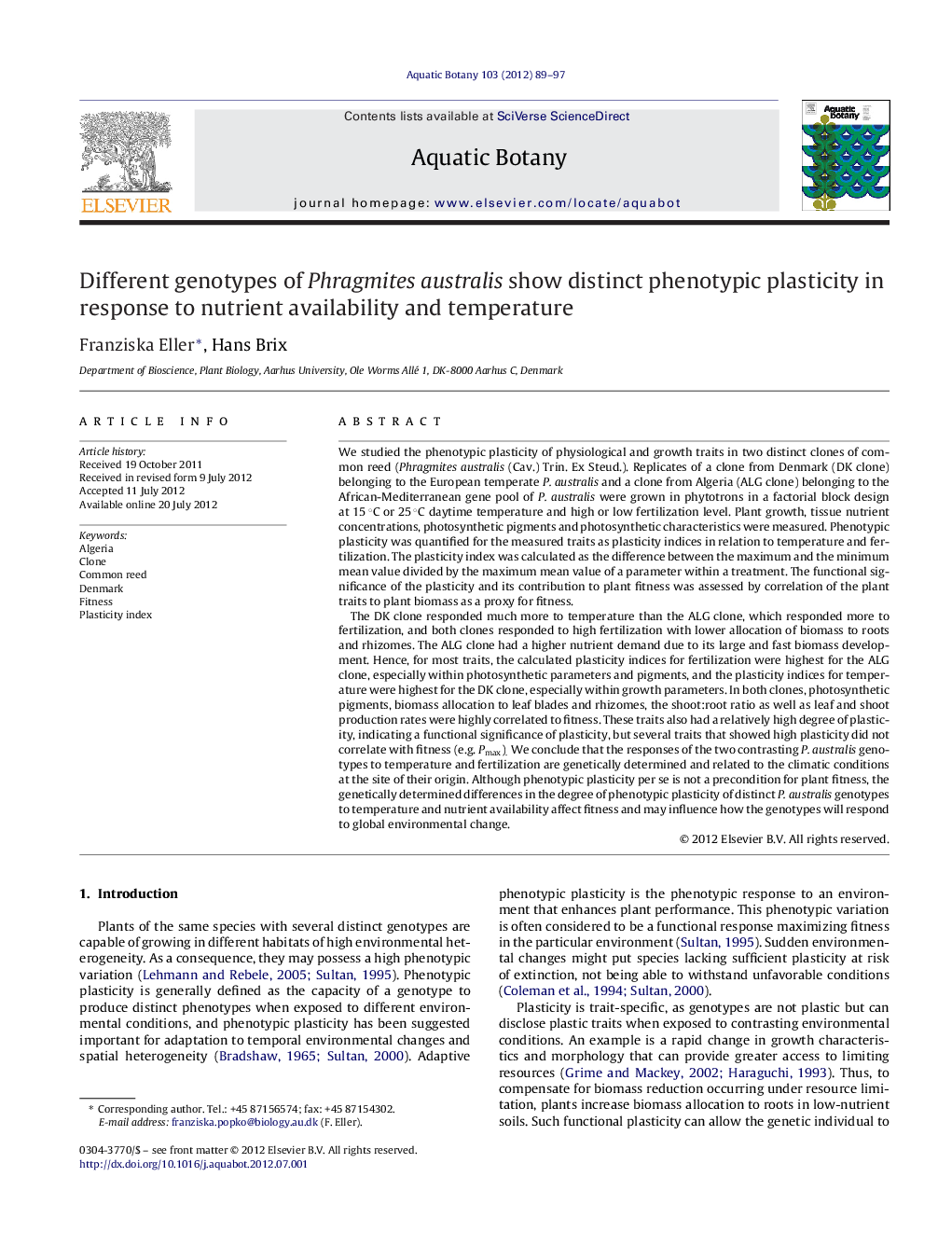| کد مقاله | کد نشریه | سال انتشار | مقاله انگلیسی | نسخه تمام متن |
|---|---|---|---|---|
| 4528007 | 1625839 | 2012 | 9 صفحه PDF | دانلود رایگان |

We studied the phenotypic plasticity of physiological and growth traits in two distinct clones of common reed (Phragmites australis (Cav.) Trin. Ex Steud.). Replicates of a clone from Denmark (DK clone) belonging to the European temperate P. australis and a clone from Algeria (ALG clone) belonging to the African-Mediterranean gene pool of P. australis were grown in phytotrons in a factorial block design at 15 °C or 25 °C daytime temperature and high or low fertilization level. Plant growth, tissue nutrient concentrations, photosynthetic pigments and photosynthetic characteristics were measured. Phenotypic plasticity was quantified for the measured traits as plasticity indices in relation to temperature and fertilization. The plasticity index was calculated as the difference between the maximum and the minimum mean value divided by the maximum mean value of a parameter within a treatment. The functional significance of the plasticity and its contribution to plant fitness was assessed by correlation of the plant traits to plant biomass as a proxy for fitness.The DK clone responded much more to temperature than the ALG clone, which responded more to fertilization, and both clones responded to high fertilization with lower allocation of biomass to roots and rhizomes. The ALG clone had a higher nutrient demand due to its large and fast biomass development. Hence, for most traits, the calculated plasticity indices for fertilization were highest for the ALG clone, especially within photosynthetic parameters and pigments, and the plasticity indices for temperature were highest for the DK clone, especially within growth parameters. In both clones, photosynthetic pigments, biomass allocation to leaf blades and rhizomes, the shoot:root ratio as well as leaf and shoot production rates were highly correlated to fitness. These traits also had a relatively high degree of plasticity, indicating a functional significance of plasticity, but several traits that showed high plasticity did not correlate with fitness (e.g. Pmax). We conclude that the responses of the two contrasting P. australis genotypes to temperature and fertilization are genetically determined and related to the climatic conditions at the site of their origin. Although phenotypic plasticity per se is not a precondition for plant fitness, the genetically determined differences in the degree of phenotypic plasticity of distinct P. australis genotypes to temperature and nutrient availability affect fitness and may influence how the genotypes will respond to global environmental change.
► We measure the phenotypic plasticity of Phragmites australis traits.
► The two investigated reed genotypes differ in their treatment responses.
► The most plastic traits are related to growth and biomass production.
► Plasticity of a trait is not a precondition for contribution to plant fitness.
► The genetic and climatic origin of reed genotypes determines their plastic responses.
Journal: Aquatic Botany - Volume 103, October 2012, Pages 89–97